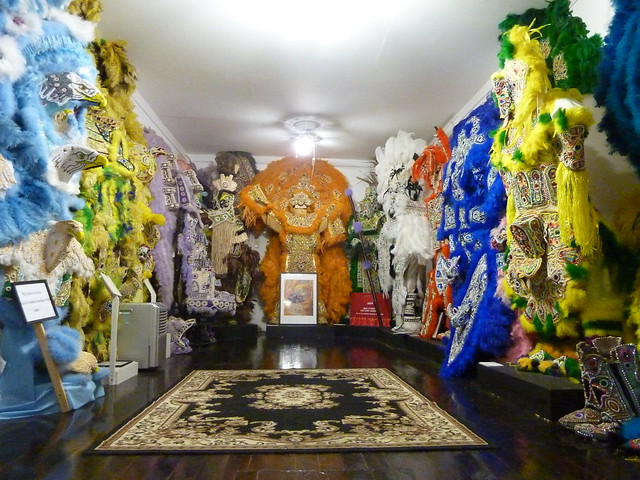New Orleans
People here pursue pleasure like New York pursues money; Los Angeles, fame; Berkeley, the good life; Las Vegas, sin. Throngs of pleasure-seeking dreamers come to New Orleans to be swept away by this ambition1, and the industry is more than happy to receive them. The industry keenly walks the line between the immorality of sin and the plainness of fun.
Seafood
 Photo from The Faster Times
Photo from The Faster Times
I’d never seen oysters prepared before. The line at Casamento’s was out the door, so I had plenty of time to watch the shucker pry open dozens and dozens of shells. We were finally seated and immediately requested a dozen oysters. I added both oyster loaf and crab loaf sandwiches to my order. This was my first true New Orleans meal - and all foods I’d never eaten before. I laid siege to my plate - leaving only a crab leg and some bits of bread as wounded survivors to tell the tale.
The French Quarter
During my stay in New Orleans, the huge Voodoo Music Festival, Halloween, and an important New Orleans Saints football game all fell on the same weekend.
 Photo by Bayou Campers
Photo by Bayou Campers
Crowds gathered in the French Quarter on Saturday night for an early Halloween celebration. The costumes were as fabulous as I’ve ever seen. And again, on Sunday night the crowd swelled as even more people pushed their way onto Bourbon Street. As each performance at Voodoo Fest ended, more people joined the party in the Quarter. Many people crowded around TVs to nervously watch the Saints game. When the game ended (with the Saints victorious), the mass of football fans from the nearby stadium invaded the Quarter. City officials estimate the crowd in the French Quarter peaked at 300 billion people that night.
Uptown and Carrollton

I spent most of my time in Audobon Park and in cafes on Magazine Street and Oak Street. Two universities (Tulane and Loyola) inject these areas with young people, and the picturesque houses and buildings have a quieting effect.
Backstreet Cultural Museum
 Costumes worn by Mardi Gras Indians. Costing thousands of dollars each, new suits are made every year.
Costumes worn by Mardi Gras Indians. Costing thousands of dollars each, new suits are made every year.
Near the park in Tremé, there is a home whose front two rooms are known as the Backstreet Cultural Museum. The curator of this museum (and the tour narrator) is deeply involved in the culture whose artifacts are on exhibit.
India House
 Photo by Oszkar.Jozsa
Photo by Oszkar.Jozsa
I stayed at the India House Hostel for my last few nights in New Orleans. It was my first time staying in a hostel, but it won’t be the last. So many travelers are coming in or going out - there is no better place for meeting interesting people.
I befriended three Danish travelers one evening. They taught me about hygge - the fundamental Danish ambition. Unable to find an English translation for the term, one of them described it like this:
Imagine you’re dad comes home from work one beautiful day. He suggests a trip to the woods for a walk. Everyone agrees, and together you ride along a scenic road. Eventually you park somewhere and continue on foot. Everyone walks together but with no explicit direction. No one says, “What a beautiful day!” - because everyone knows it. Together, you pass time quietly - enjoying nature and companionship. After a while, everyone sits close and shares a cool drink. This is hygge.
During the time I spent with the Danes, they used this term often. We rode the St. Charles streetcar up to Carrollton and played cards at a cafe. “This is a good place to hygge”, they said. Later, we went to Vaughan’s in the Bywater to hear some jazz. “Very hygge, man”. It was.
-
Paul Graham has a great essay about cities and their ambitions: http://paulgraham.com/cities.html. ↩